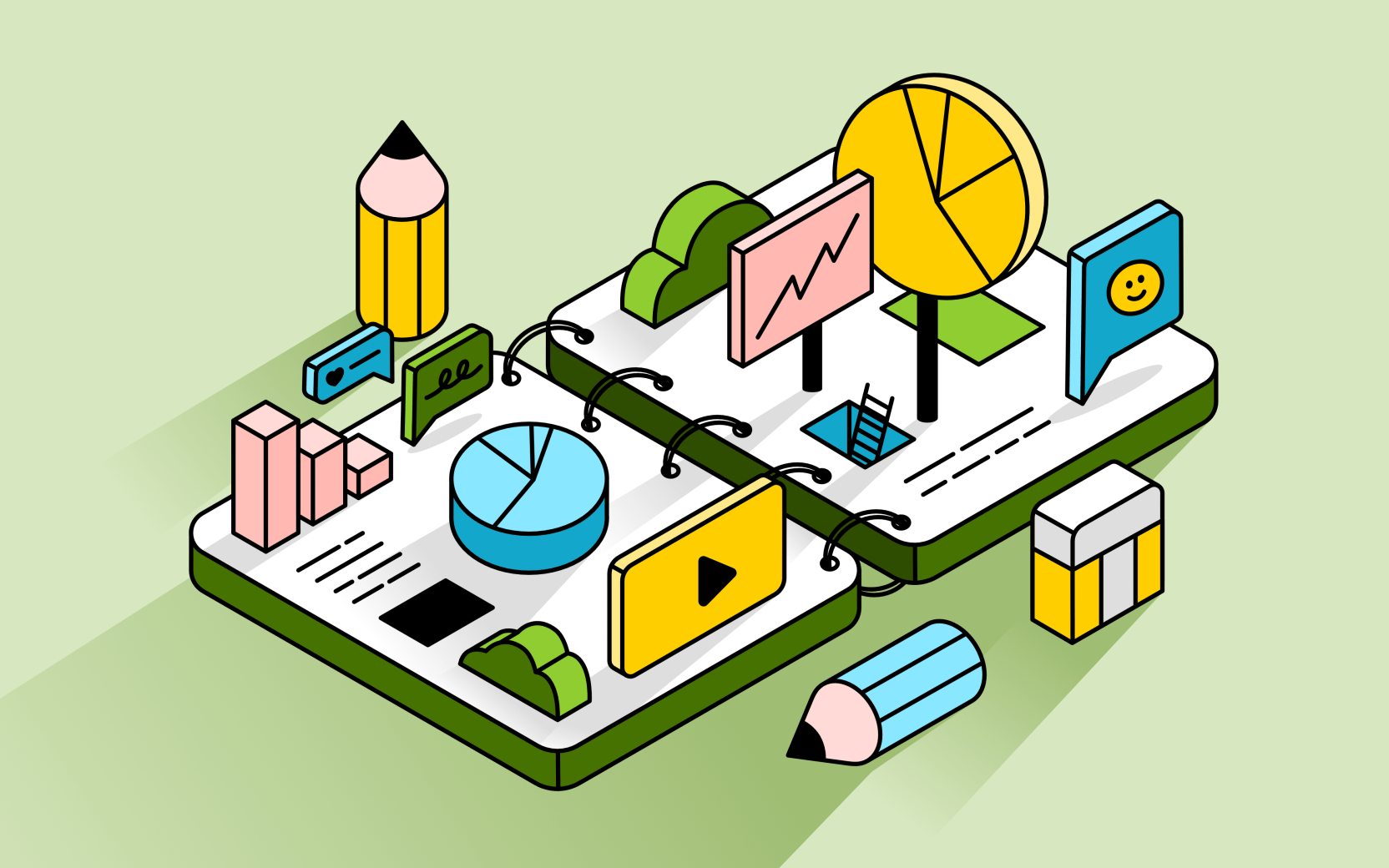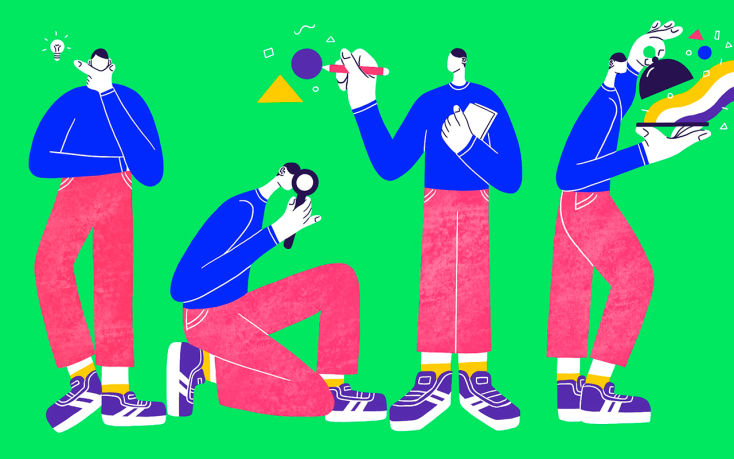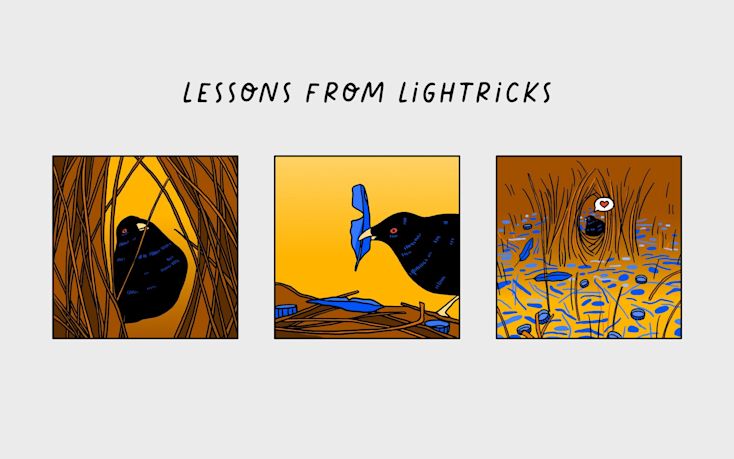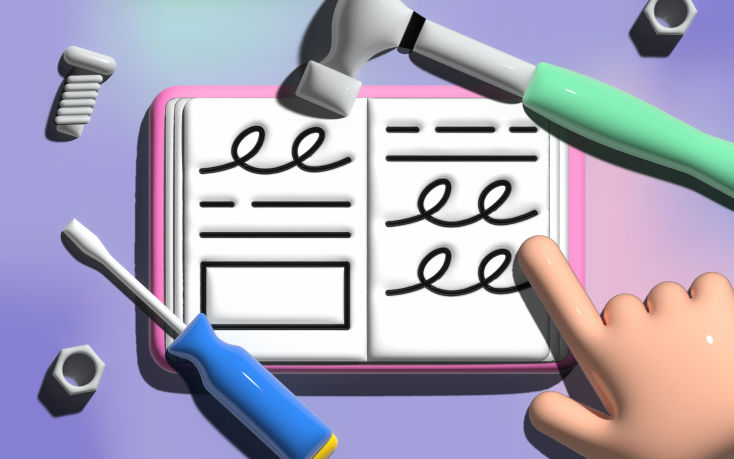How to use mixed media to level-up your UX research reports

Words are a fantastic way of conveying information, but, even I must admit, they can fall short in research reports. Coming from academia, where my audience highly regarded long-winded (yet eloquent) papers, I thought I could do the same as a user researcher. My initial reports were packed full of words. I fit as much text on a slide as humanly possible. It was the best way I knew to convey information.
However, it wasn't very well-received. From the beginning, everyone told me to be more visual. I should add charts, graphs, and visualizations to make my user research reports easier to digest and helpful for teams. The problem? I hated creating visual presentations. Not because I disagreed that they were better, but because I had no idea how to put the words into easy-to-understand graphics. It was a total nightmare for me.
Eventually, I understood that not every report had to have beautiful infographics and charts. It wasn't about creating stunning visuals but conveying the meaning and impact of the research. There are a variety of ways to do this. Since then, I have ensured my reports are full of mixed media. With these changes, stakeholders paid more attention to findings and ingested research more effectively.
What is a mixed media report?
A mixed media report is one that includes multiple media types outside of just words. In my research presentations, I use a mixture of:
Video clips of research sessions.
Audio clips of research sessions.
Photos of settings (during contextual inquiry)
Annotations of prototypes or concepts
Infographics, including charts and graphs
Research deliverables, such as personas and journey maps, are different types of media that I won't cover in this article. However, they are helpful when conveying research projects, so keep them in mind!
By mixing different media types in my reports, I saw a massive lift in the conversion of my research.
When I used to fill my presentations with only words, people would nod off or miss the point. Words are powerful, but they didn't get across what I needed to. The first idea I experimented with was video clips. As soon as I started adding video clips to my presentations, my stakeholders perked up, especially those who weren't present in the sessions. I managed to bridge the gap between users and stakeholders.
Once I made this change, stakeholders started to discuss my research more seriously. My findings became actionable because I showed them what was happening to users. As a result, they better understood their decisions' impact on users and how those decisions affected their goals. For example, if my colleagues decided on a particular experience for a checkout funnel, they weren't sure if it would positively uplift metrics. By showing stakeholders how users responded to a design and experience decision, they knew what wasn't going well and could generate ideas to fix it.
I know reports can come in many different forms, and some don't lend themselves to mixed media. For instance, I give a lot of presentations via Google Slides or Powerpoint. Presentations are a great way to incorporate mixed media. However, I have also written paper reports and find it much more challenging to include media that isn't too academic. I use infographics that I can easily paste into Word or a Google Doc for written reports. I also link out to video or audio clips so readers can experience them easily.
Incorporate different types of media
Just because there are many different media types doesn't mean you have to use all of them at once. When I discovered I could use these, I piled them all into one report. I thought, the more, the merrier, or more impactful. Unfortunately, my poor colleagues were extremely overwhelmed by all the graphs, videos, and charts jumping out on them, and I lost the presentation thread. Since then, I have used one or two media types per presentation and never go above three.
So, when are the different media types most effective? Let's dive into each type and explore how and when to use each one.
Video clips
I constantly use video clips to make it easy for colleagues to understand what happened and why and better empathize with the user in a particular situation. Video clips are an effective manner of conveying pain points and struggles.
I use video clips, mainly when usability testing a prototype or interactive concept. I pick the clips where users struggle the most with a specific task and are frustrated or failing to achieve the task. Usually, I choose a task that many users grappled with and create a "highlight reel" across participants. This highlight reel of pain points calls attention to what went wrong and gives stakeholders the context to make better decisions.
Goals for using video clips:
Convey pain points within a product, prototype, or concept
Show the audience how a variety of participants reacted to a task or experience
Make insights feel more actionable and real
Cultivate a sense of empathy
Audio clips
Although I default to video clips, audio clips are also helpful in communicating a message. When conducting generative research, and the video is of the participant and me, I sometimes opt for an audio clip. The audio clip allows my audience to focus on the participant's words rather than getting distracted by irrelevant video. I also use audio clips when there are several important points I want to get across. I embed the clips after introducing a theme or pattern in the research as "evidence." Typically, I use audio clips to highlight needs or pain points that come up during the session.
Goals for using audio clips:
Cultivate a sense of empathy
Show unmet needs or pain points at a larger scale (not only with a product or prototype)
Give evidence to themes or patterns found in the research
Photos
A picture is worth a thousand words. That saying rings true in research reports as well. I use photos primarily to convey the participant's environment and setting. I gather these photos through either contextual inquiry (in-person) or diary studies. A snapshot of someone's working environment or home can give stakeholders an inside view into users. We can learn so much from setting—why users work in certain ways, what may be working against them, and how they react to their environment. Whenever possible, I like to use photos with audio clips, giving both a visual and auditory experience.
Goals for using photos:
Show environment, ecosystem, or setting of users that the audience usually doesn't see
Give context to how a product, prototype, or concept may fit into a user's environment/setting
Cultivate a sense of empathy
Annotations of prototypes or concepts
Whenever I do a usability test, I use annotations. They are the most powerful tool that I can use to show details on what went wrong during a usability test. I take a screenshot of the app or desktop and then use arrows to point to specific areas of the prototype, product, or concept difficult for participants. I write briefly what went wrong. At the end of the presentation, I recap the annotations in a chart. I use annotations and video clips together. The video clips illustrate the most severe usability issues after I show an annotation.
Goals for using annotations:
Show the areas that were difficult or problematic for users
Give a detailed walkthrough of a prototype, product, or concept and what needs to be improved
Infographics
Lastly, the dreaded infographics—at least they were for me. I used to write out participant information into an enormous, blobby paragraph or explain the results of a survey through words. But, once I found out infographics weren't impossible to create, I used them in my presentations. Whenever I have quantitative data to share, my go-to is a chart or a graph. You can also use infographics for smaller sample sizes by using visuals to explain your most important findings or the number of people who brought up a particular insight. If you have a hard time with infographics, check out my Canva templates to get started!
Goals for using infographics:
Show quantitative data results from surveys
Visually explain major trends
Adding these various media types to your presentations can make your audience pay more attention and make your insights more actionable. Our goal as researchers is to bridge the gap between users and the organization, and including these media types in presentations helps lessen that gap beyond words.
Written by Nikki Anderson, User Research Lead & Instructor. Nikki is a User Research Lead and Instructor with over eight years of experience. She has worked in all different sizes of companies, ranging from a tiny start-up called ALICE to large corporation Zalando, and also as a freelancer. During this time, she has led a diverse range of end-to-end research projects across the world, specializing in generative user research. Nikki also owns her own company, User Research Academy, a community and education platform designed to help people get into the field of user research, or learn more about how user research impacts their current role. User Research Academy hosts online classes, content, as well as personalized mentorship opportunities with Nikki. She is extremely passionate about teaching and supporting others throughout their journey in user research. To spread the word of research and help others transition and grow in the field, she writes as a writer at dscout and Dovetail. Outside of the world of user research, you can find Nikki (happily) surrounded by animals, including her dog and two cats, reading on her Kindle, playing old-school video games like Pokemon and World of Warcraft, and writing fiction novels.

Users report unexpectedly high data usage, especially during streaming sessions.
09:46AM24 Sep, 2024
Users find it hard to navigate from the home page to relevant playlists in the app.
11:32AM9 Mar, 2024
It would be great to have a sleep timer feature, especially for bedtime listening.
15:03PM13 May, 2024
I need better filters to find the songs or artists I’m looking for.
4:46PM15 Feb, 2024Log in or sign up
Get started for free
or
By clicking “Continue with Google / Email” you agree to our User Terms of Service and Privacy Policy


